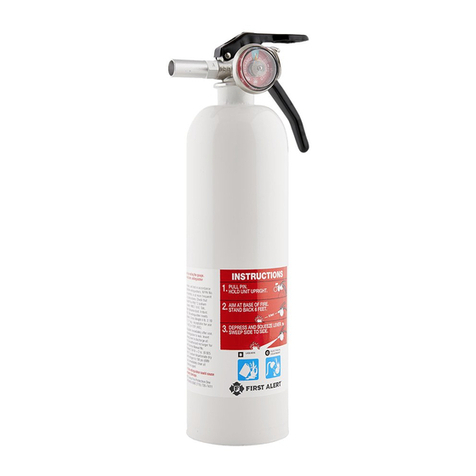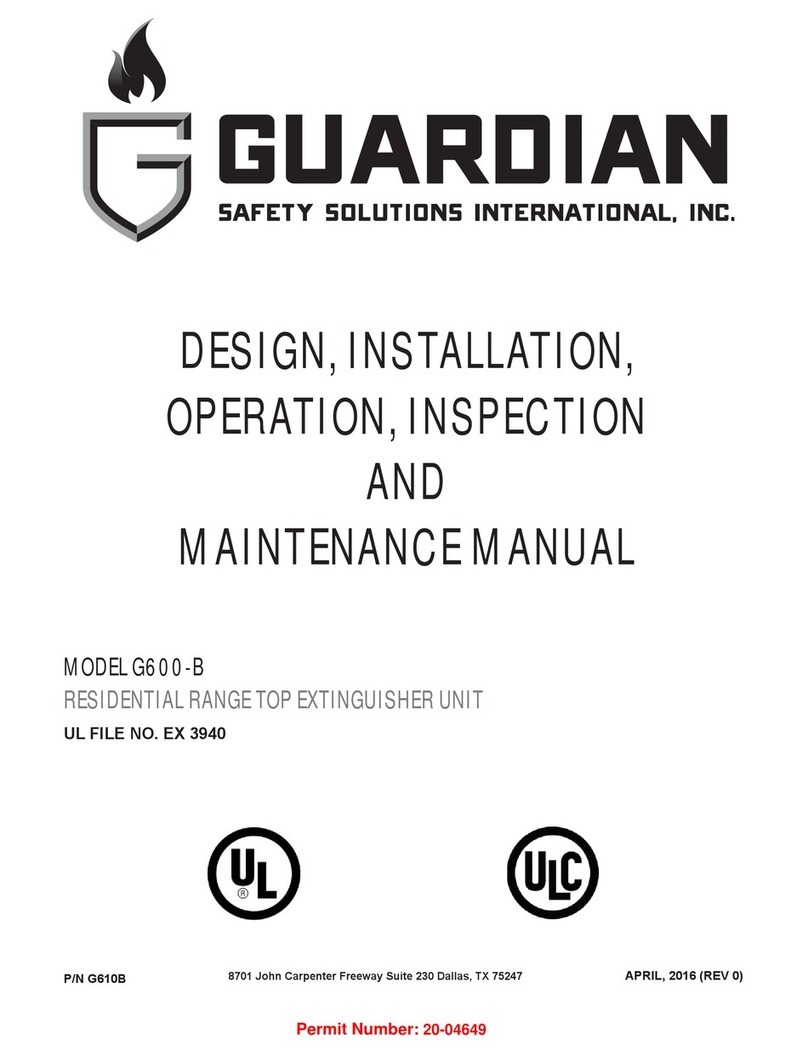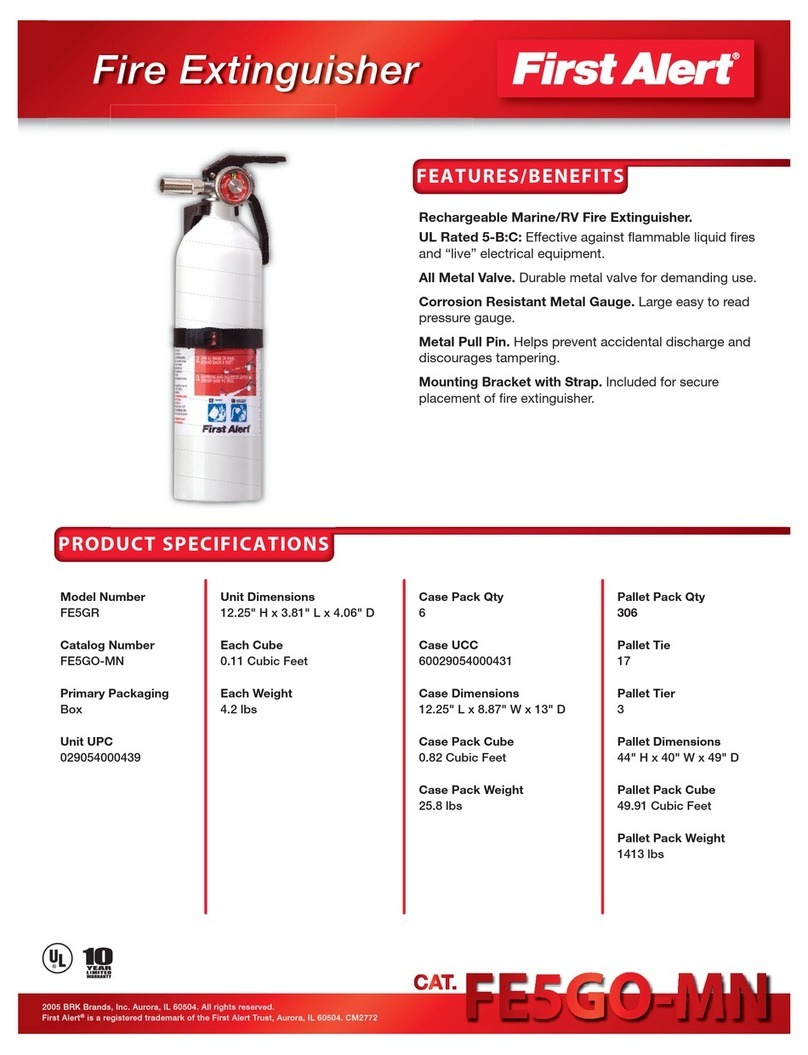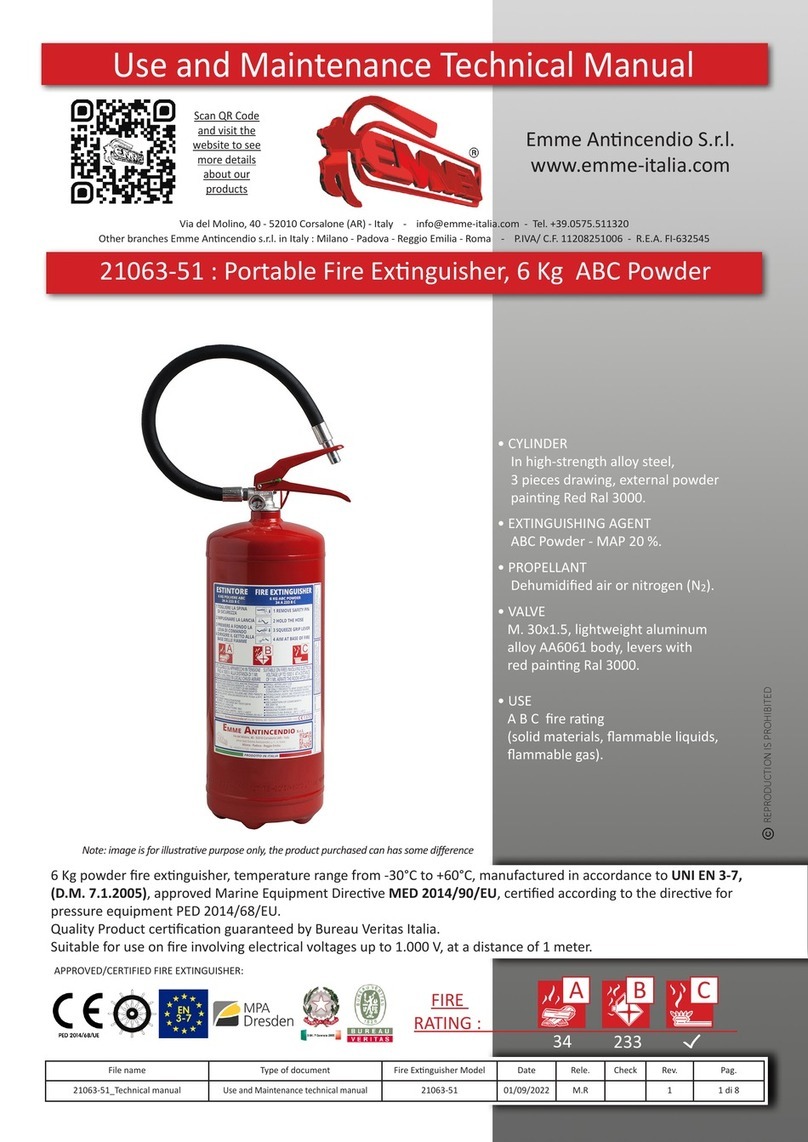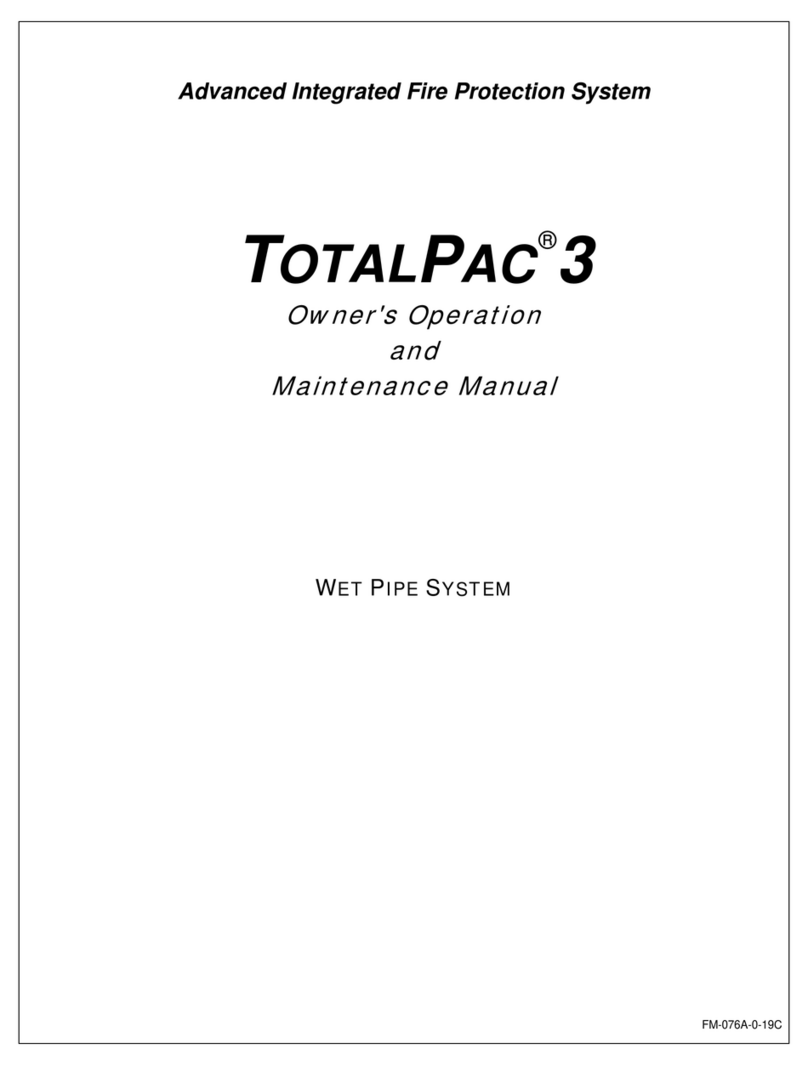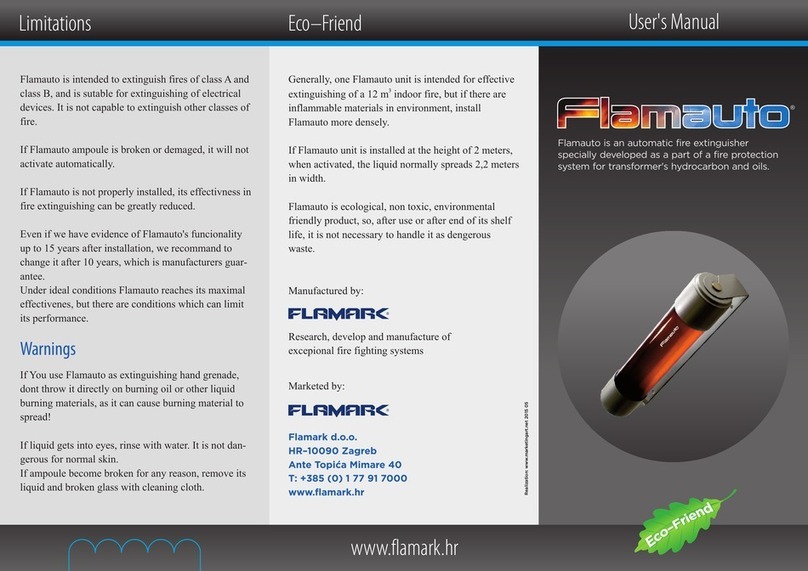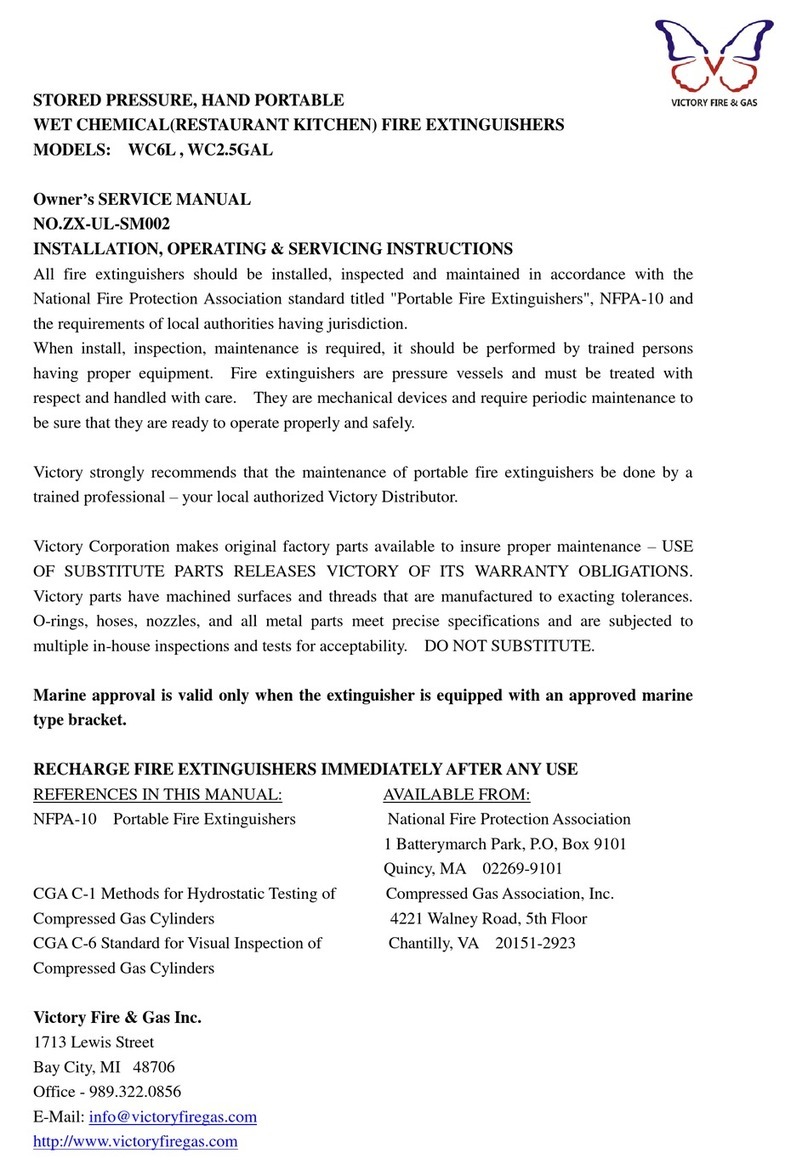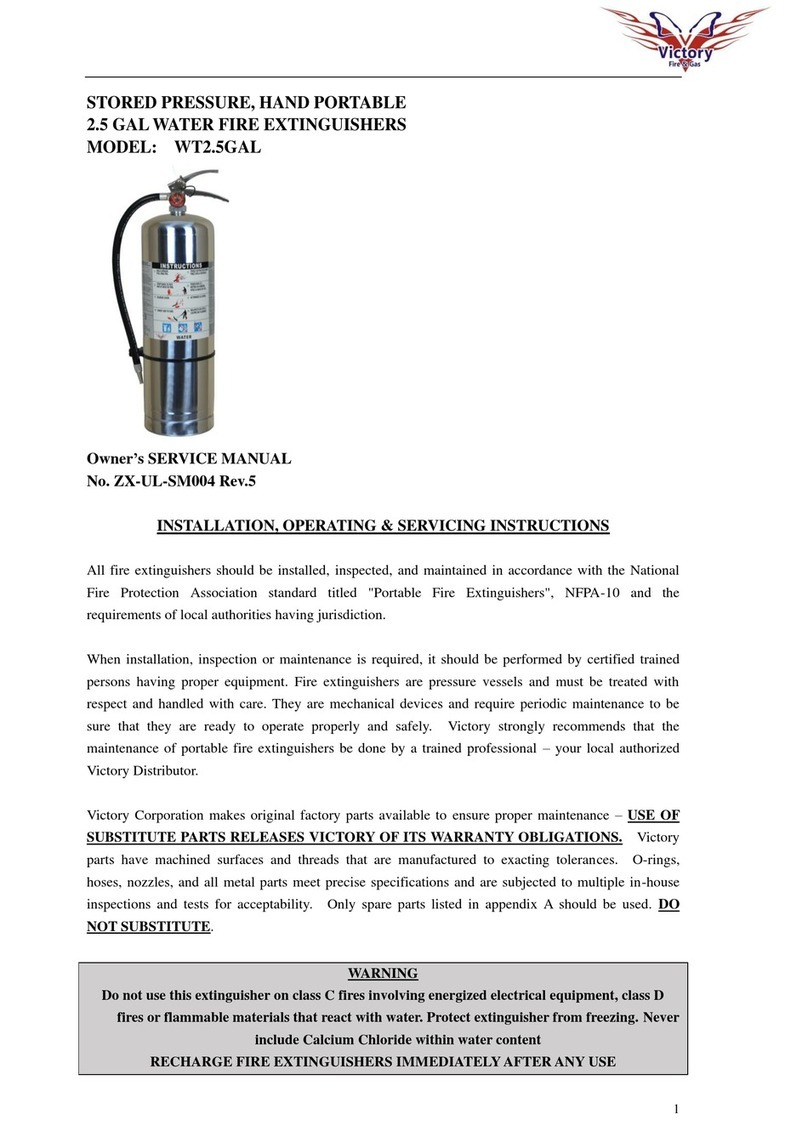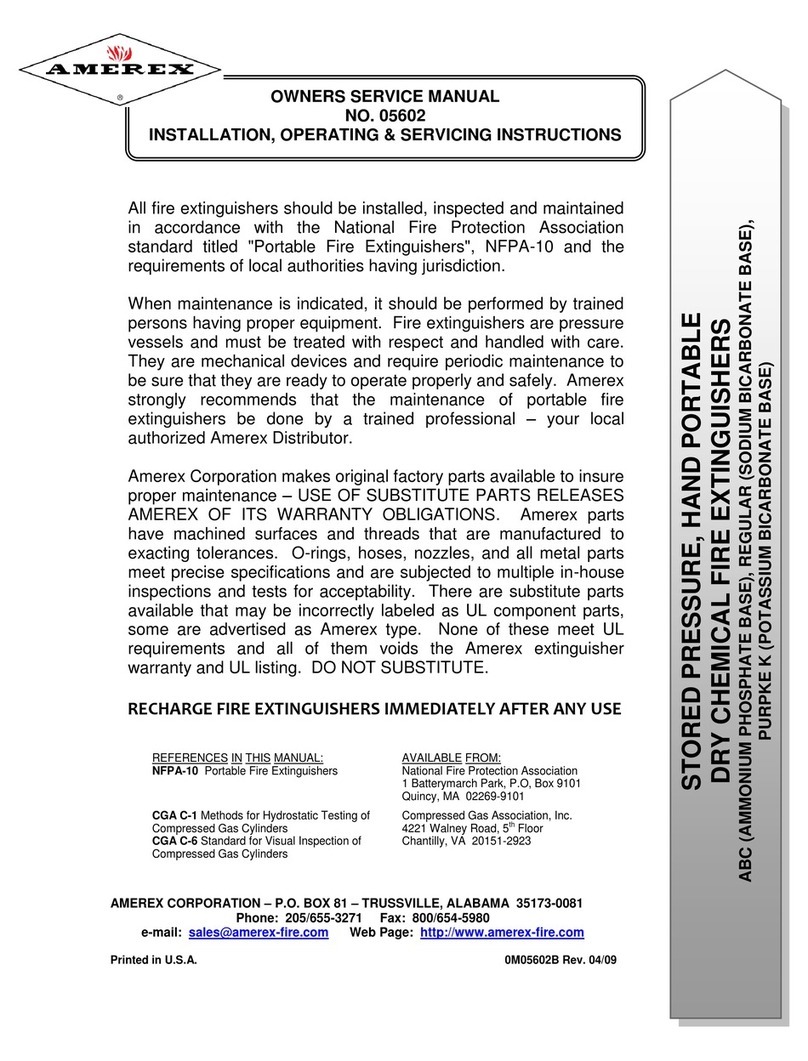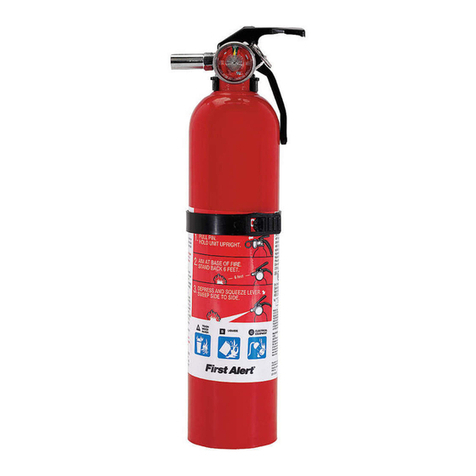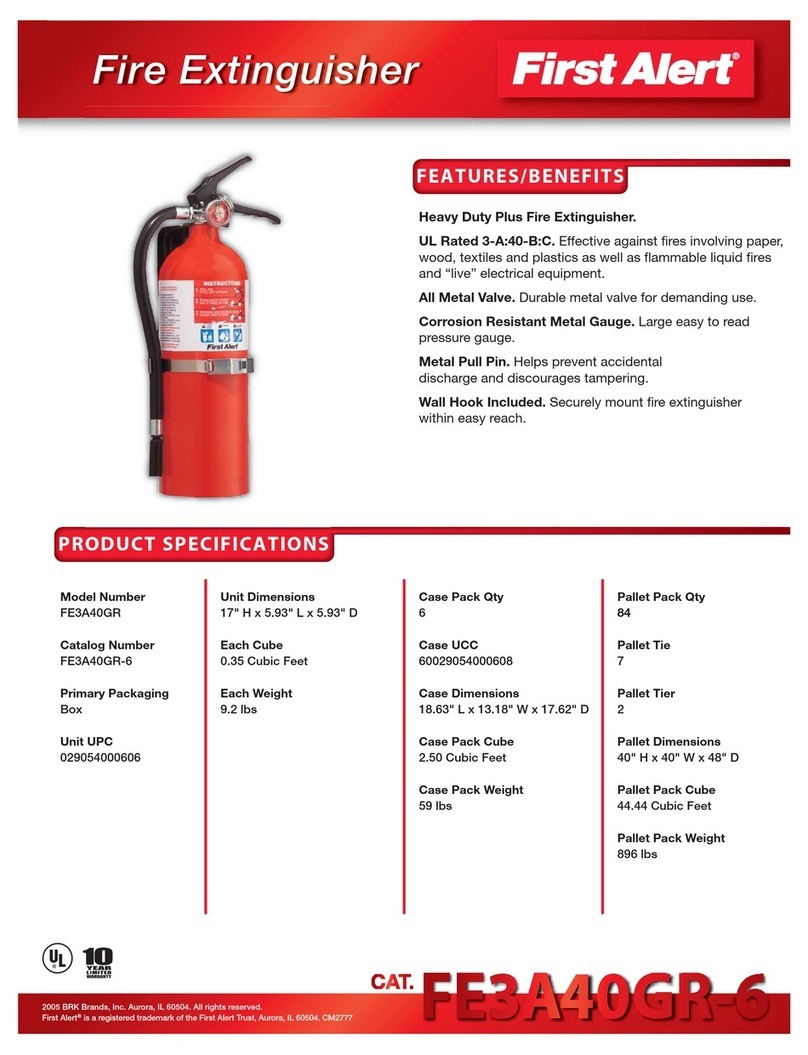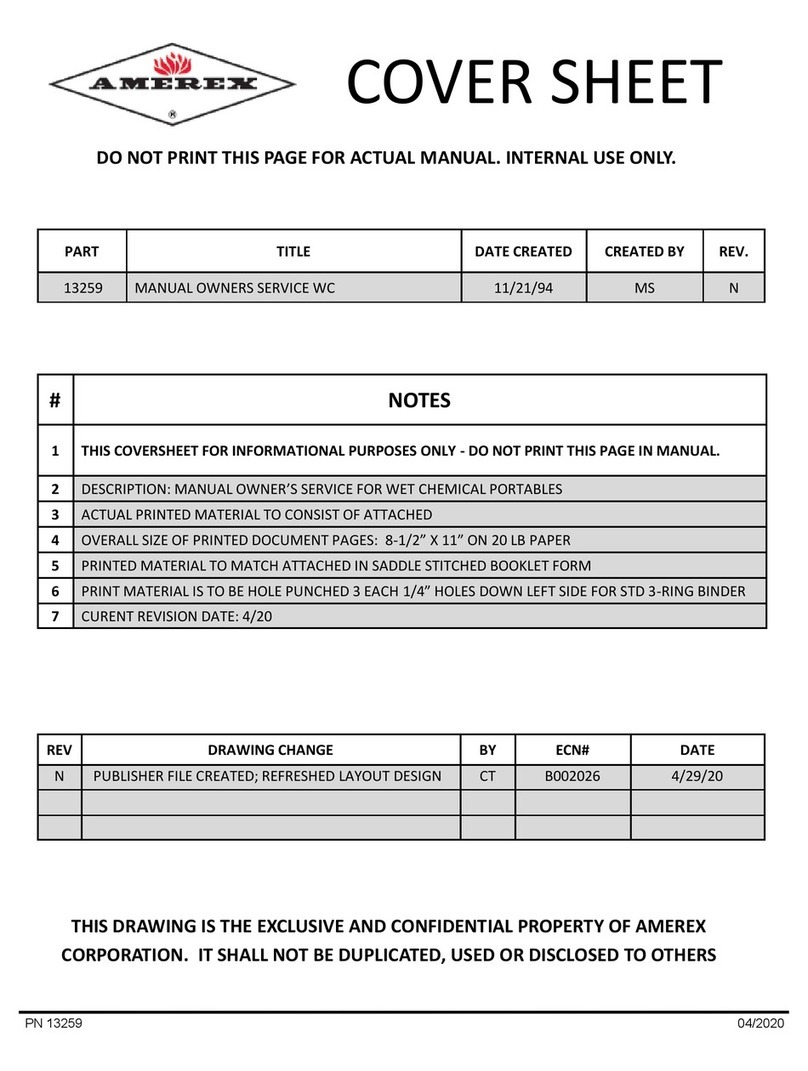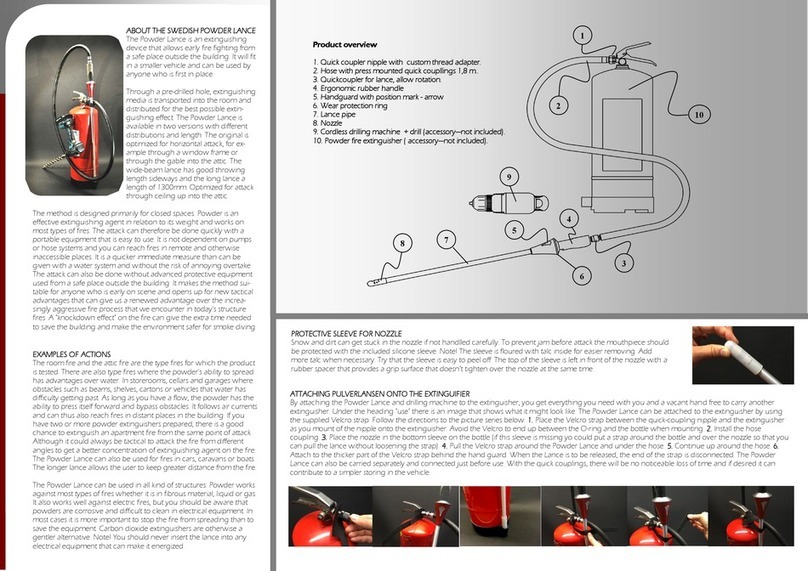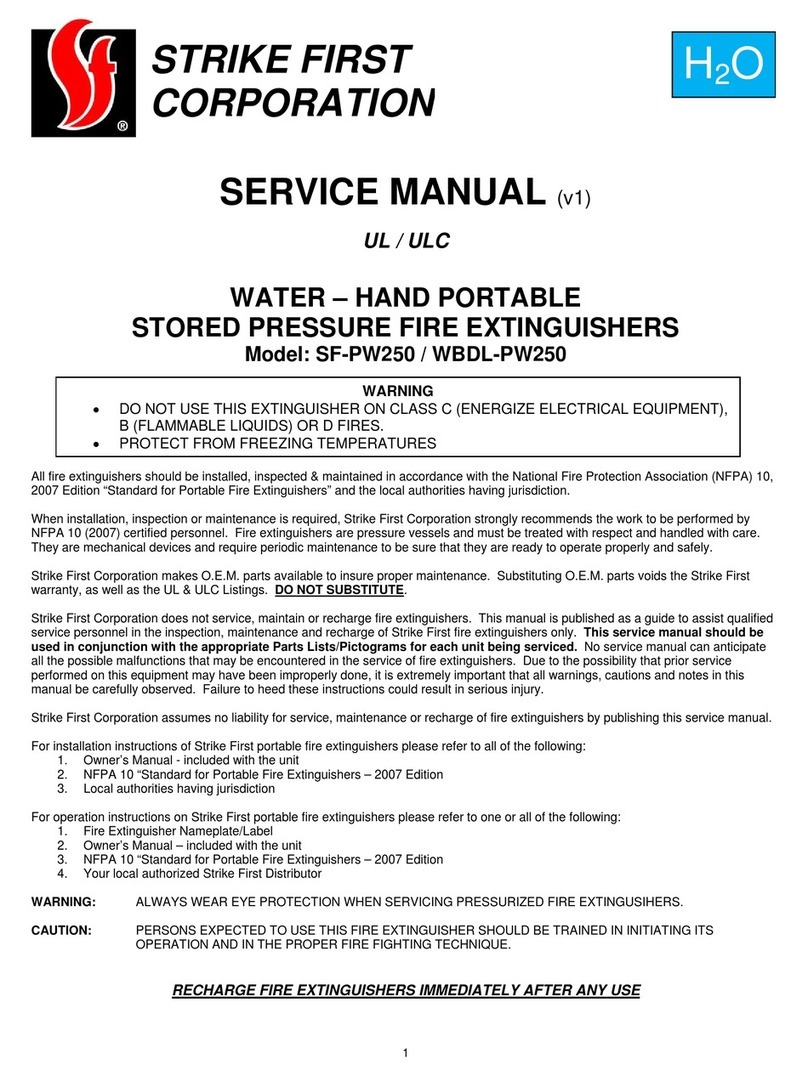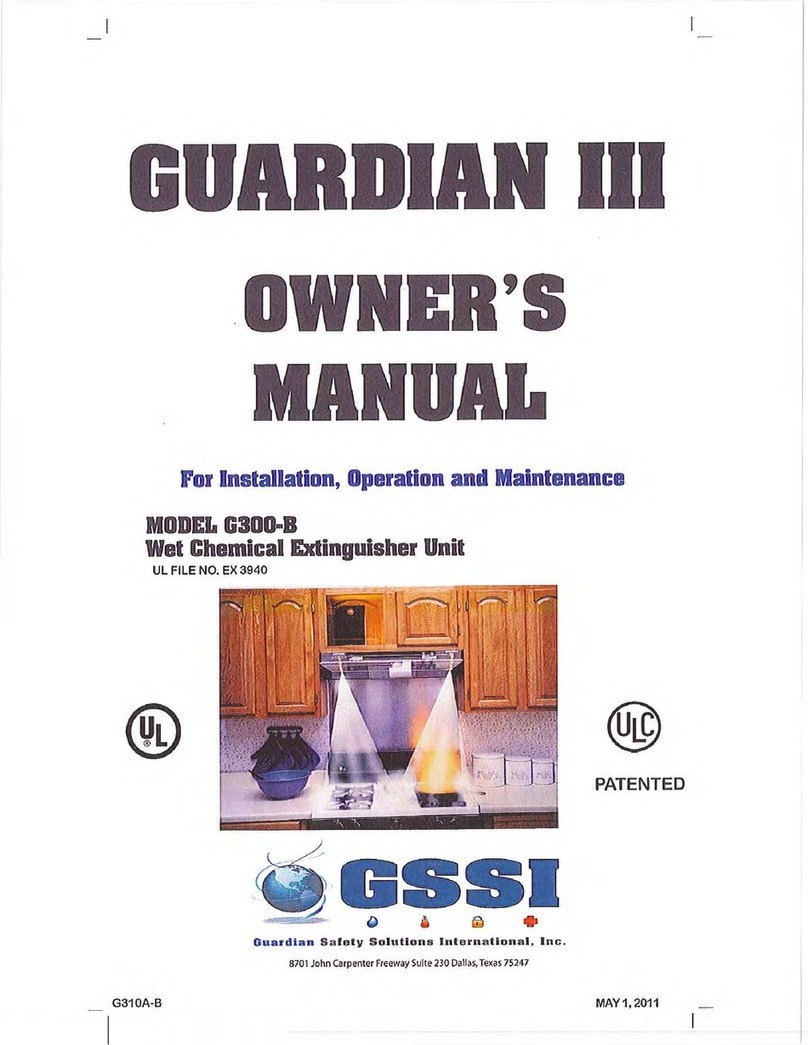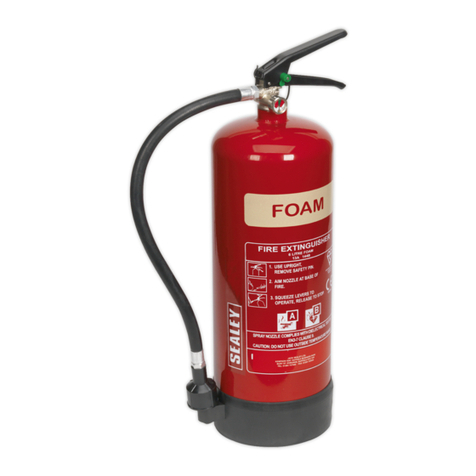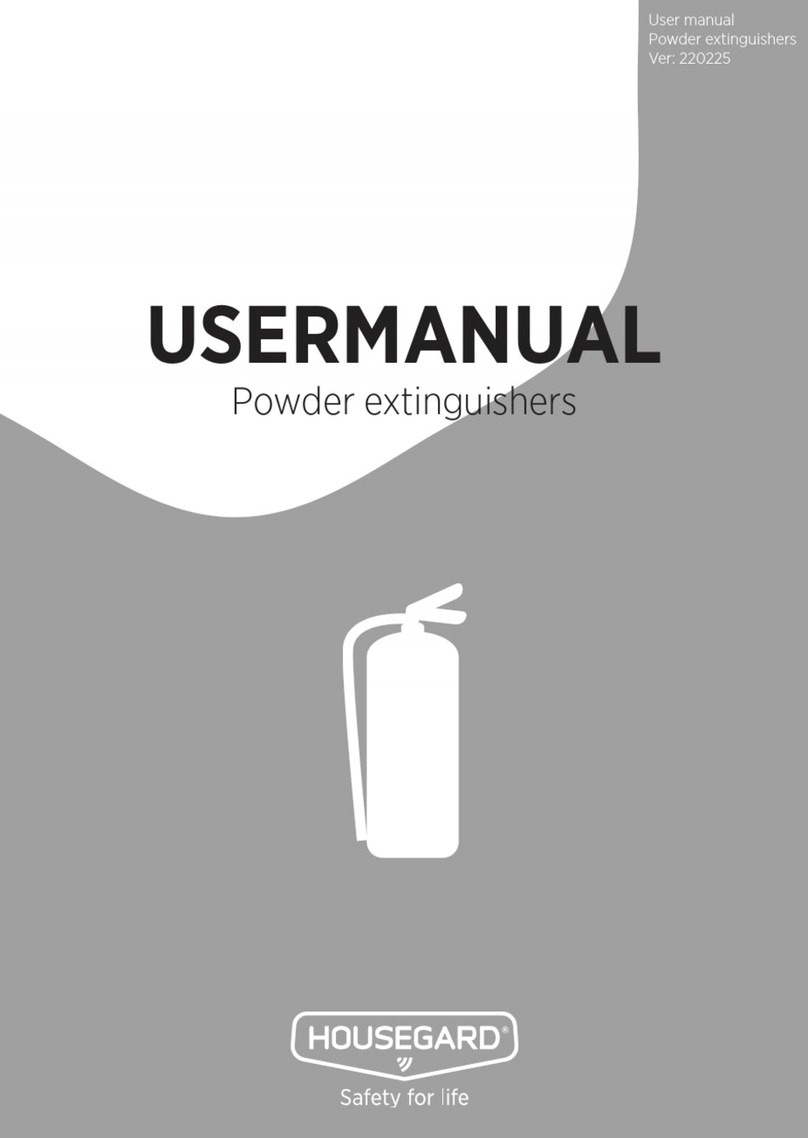8
COMPLETE MAINTENANCE –FIVE YEAR TEARDOWN / HYDROTEST
[NFPA-10] Every five years, carbon dioxide extinguishers require a five-year hydrostatic test
shall be emptied and subjected to the applicable maintenance procedures. When the applicable
maintenance procedures are performed during periodic recharging or hydrostatic testing, the
five-year requirement shall begin from that date.
NOTE: Some states have legislation which requires "Complete Maintenance" on an annual
basis. Please contact your local Victory Distributor to see if these requirements apply to you
1. Discharge all remaining CO2, making sure there is no remaining pressure. Make sure that the
extinguisher is completely empty and depressurized.
2. Clean extinguisher to remove dirt, grease, or foreign material. Check to make sure that the
instruction nameplate is securely fastened and legible. Inspect the cylinder for corrosion,
abrasion, dents, or damage. If any of these conditions are found and you doubt the integrity of
the cylinder, hydrostatically test to factory test pressure marked on the nameplate (label),
using the proof pressure method, in accordance with DOT 3AL, CGA C-1 and NFPA 10. Any
distortion or leakage of the cylinder shall be cause for rejection.
3. Inspect the extinguisher for damaged, missing or substitute parts. NOTE: only factory
replacement parts are approved for use on victory fire extinguishers.
4. Check the date of manufacture on the extinguisher label (nameplate). Cylinder must be
hydrostatically (proof pressure) tested every five years to the test pressure indicated on the
nameplate according to DOT 3AL. Any distortion or leakage of the cylinder shall be cause for
rejection. Never place an extinguisher back into service if hydro test is overdue. Always
complete hydro test and if acceptable return to service. NOTE: Always refill with correct
amount of CO2. DO NOT OVERFILL. Always use an approved source of carbon dioxide.
DO NOT USE DRY ICE. Use only approved equipment, hose, and recharge fittings to
ensure safe and efficient methods.
5. Check ring (safety) pin for freedom of movement. Replace if bent or if removal appears
difficult.
6. Inspect discharge lever for any dirt or corrosion which might impair freedom of movement.
Inspect carrying handle for proper installation. If lever, handle, or rivets are damaged, replace
with proper Victory parts.
7. Remove horn or hose assembly and visually inspect threads on nozzle and/or hose coupling,
hose for damage, and replace as necessary. Blow air through nozzle and hose to ensure
passage is clear of foreign material or obstructions.
8. Carbon dioxide hose assemblies have a continuous metal braid that connects both metal
couplings to minimize electric shock. The continuity test shall be performed using a basic
conductivity tester consisting of a flashlight having open circuit and a set of two wires with a
conductor at each end (see NFPA10)
9. Inspect the valve assembly for corrosion or damage to hose thread connection. Replace valve
assembly or component parts as necessary. NOTE: Do not overtighten CO2valves
(maximum tightening torque 70-96 ft lbs (95-130Nm)). Use correct fitting when
tightening valve to cylinder. Excessive torque can damage the valve and/or cylinder
threads and lead to unsafe situations with potential for valve ejection resulting in
property damage and/ or loss of life or serious injury.
